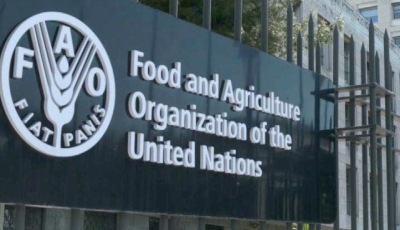Rome, May 23 : Representatives of more than 500 partners, including members of the Food and Agriculture Organization (FAO) of the United Nations, are gathering this week for the 10th Plenary Assembly of the Global Soil Partnership (GSP), which since inception a decade ago has worked to raise global and local awareness of the importance of sustainable soil management and guide policies to tackle issues ranging from erosion, salinisation, and pollution to biodiversity conservation, carbon sequestration and nutrient imbalances.
The role of soils and their fertility is more important than ever to ensure food security for all, and enable the transformation of agrifood systems to be more efficient, more inclusive, more resilient and more sustainable, FAO Director-General QU Dongyu said in remarks opening the assembly.
Hailing the GSP’s achievements so far in advocacy, capacity development, data and mapping, and mobilising investments, he urged the participants to work to catalyse and scale up sustainable soil management solutions on the ground.
“Our goal going forward is to improve and maintain the health of at least 50 per cent of the world’s soils by 2030, which is only possible with your strong support and solidarity,” the Director-General added.
That goal — outlined in the new GSP Action Framework 2022-2030 to be adopted at the plenary — is urgent given that one-third of the world’s soils today are in poor or very poor condition and suffer from degradation processes caused by unsustainable management practices.
Soil health cannot be measured by agricultural fertility alone.
According to the Intergovernmental Technical Panel on Soils (ITPS), set up at the first GSP plenary and comprising 27 top experts from around the world providing scientific advice, healthy soils are those “with the ability to sustain the productivity, diversity and environmental services of terrestrial ecosystems”.
Those services include enabling landscapes to act as the largest planetary store of carbon after oceans, water storage that enables life to exist even during dry periods, acting as a buffer against flooding, and regulating large-scale water cycles.
They also foster biodiversity that helps regulate the occurrence of pests and diseases, and even providing a source for pharmaceutical products.
“Healthy soils provide safe and nutritious food and support healthy populations and ecosystems,” said Ronald Vargas, Secretary of the GSP.
Unhealthy soils not only have lost their natural levels of biodiversity and productivity, but are less resilient, so prone to further degradation, he added.
While public interest in soil health has increased since FAO coordinated the 2015 International Year of Soil and World Soil Day since 2014 as well as due to numerous GSP initiatives, it is not adequately anchored in various international commitments.
Through the new action framework, which includes measurable performance targets and proposes developing a global Soil Health Index, the GSP can act as an even stronger global voice to assure those agreements translate into concrete actions on the ground.
A highlight of the first day of the plenary is the launch of the Global Black Soil Distribution Map, fruit of a multi-year effort using a country-driven approach led by the Global Soil Partnership.
Black soils not only sustain the people settled on them, but they also feed the rest of the world through their large share of food exports, despite representing a small proportion of the world’s soils.
In fact, they generate around two-thirds of the world’s sunflower seeds, 30 per cent of its wheat and 26 per cent of its potatoes.
vg/arm
#summit #black #soils







